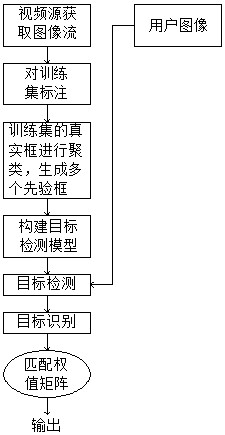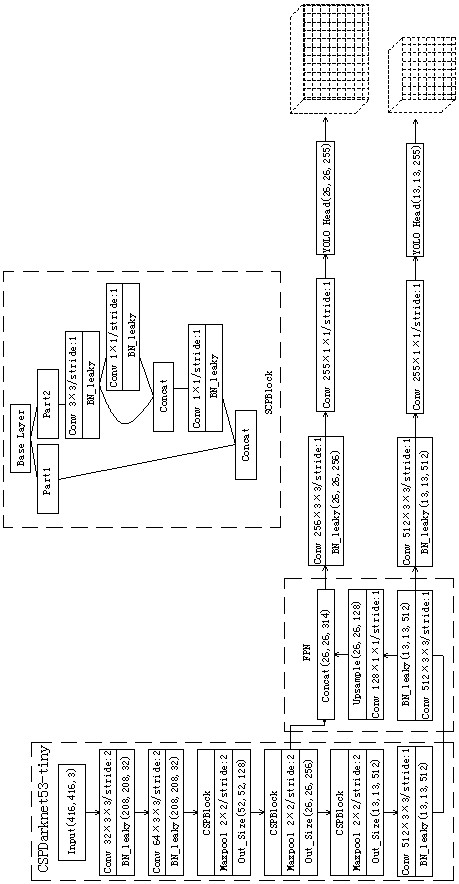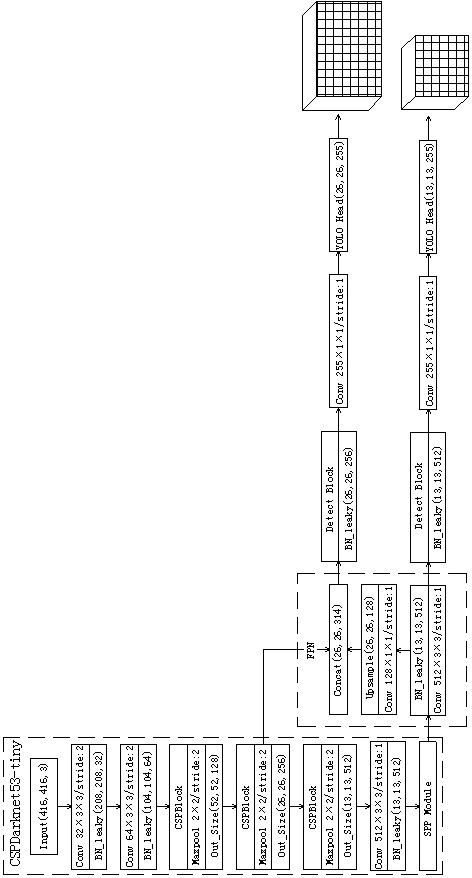Object identification method
An object recognition and object technology, applied in the field of object recognition, can solve the problems of low accuracy, inability to identify arbitrary objects at any time, and limited types of object recognition.
- Summary
- Abstract
- Description
- Claims
- Application Information
AI Technical Summary
Problems solved by technology
Method used
Image
Examples
Embodiment 1
[0036] combine figure 1 As shown, this example provides a vision-based object recognition method and system, including three parts: object detection, matching weight matrix, and object recognition.
[0037] Preferably, the object detection method includes:
[0038] Step A1: Collect the target video stream through mechanisms such as sensors and infrared rays under different environmental scenarios, different weathers, and different lighting conditions, and use multimedia processing tools (such as FFmpeg) to process the target video frame to obtain multiple image frame sequences .
[0039] Step A2-1: Perform preprocessing on the acquired multi-image frame sequence. The preprocessing methods are not limited to filtering, screening, cropping, splicing, Gaussian noise and blurring. The preprocessed target object images constitute the target object dataset.
[0040] Step A2-2: Use Labelimg, a commonly used labeling tool for target detection, to label the target object to be detect...
Embodiment 2
[0093] Build a matching weight matrix.
[0094] Step B1, collecting related data sets.
[0095] Divide the target data set into two parts, one is the large class data set of the object, and the other is the small class data set of the object, and the classification standard can be divided according to attributes, shapes, categories, etc.
[0096]Step B2, performing relational processing on the target data set. The objects of the small category are associated with the objects of the large category. Each large category is associated with multiple subcategories. The relationship between the large category and the small category is a tree structure, such as Figure 6 As shown, a relationship hierarchical diagram is formed.
[0097] Step B3, according to the relationship hierarchical graph, establish a major category and minor category matching weight matrix through cosine similarity.
[0098] Specifically, the cosine similarity is,
[0099]
[0100] Among them, A and B are ...
Embodiment 3
[0102] Transform the MobileNetv2 recognition network to classify target objects.
[0103] The advantage of Mobilenetv2 is that it proposes Linear Bottleneck and Invered Residual.
[0104] Linear Bottleneck removes ReLU by removing the features of Eltwise+, reduces the damage of ReLU to features, and replaces the original nonlinear activation transformation with linear bottleneck (that is, does not use ReLU activation, but does linear transformation).
[0105] The above-mentioned Invered Residual changes the 3x3 convolution into a depth-separable convolution, which greatly reduces the amount of calculation, and can achieve more channel designs with better results. First increase the number of channels through 1 x 1 convolution, then use Depthwise's 3x3 spatial convolution and ReLU to alleviate the degradation of features by increasing the input dimension of ReLU, and finally use 1x1 convolution to reduce the dimension.
[0106] In order to pursue speed, Mobilenetv2 is deployed...
PUM
 Login to View More
Login to View More Abstract
Description
Claims
Application Information
 Login to View More
Login to View More - Generate Ideas
- Intellectual Property
- Life Sciences
- Materials
- Tech Scout
- Unparalleled Data Quality
- Higher Quality Content
- 60% Fewer Hallucinations
Browse by: Latest US Patents, China's latest patents, Technical Efficacy Thesaurus, Application Domain, Technology Topic, Popular Technical Reports.
© 2025 PatSnap. All rights reserved.Legal|Privacy policy|Modern Slavery Act Transparency Statement|Sitemap|About US| Contact US: help@patsnap.com



